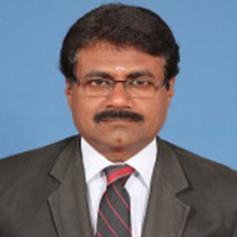
Rajesh R S
Work place: Department of Computer Science and Engineering, Manonmaniam Sundaranar University,Tirunelveli,627012, India
E-mail:
Website:
Research Interests: Computational Science and Engineering, Computer Architecture and Organization, Image Compression, Image Manipulation, Computer Networks, Image Processing
Biography
Dr. R. S. Rajesh received his B. E and M. E degrees in Electronics and Communication
Engineering from Madurai Kamaraj University, Madurai, India in the year 1988 and 1989 respectively. He got his Ph.D degree from Manonmaniam Sundaranar University during 2004. He is currently the Professor of Department of Computer Science and Engineering, Manonmaniam Sundaranar University. He has 22 years of PG teaching experience. He has published 100 articles in leading international journals. His research areas include Vehicular Adhoc Networks, Wireless networks, Digital image processing and Pervasive computing
Author Articles
EGEC: An Energy Efficient Exponentially Generated Clustering Mechanism for Reactive Wireless Sensor Networks
By Sundareswaran P Rajesh R S Vardharajulu K N
DOI: https://doi.org/10.5815/ijwmt.2018.06.05, Pub. Date: 8 Nov. 2018
As most of the wireless sensor networks are unattended by humans, the energy is an important issue while deploying nodes of wireless sensor network in hazardous environments. One of the method to preserve energy consumption among sensor nodes is clustering. Using clustering, the nodes send the data to the nearest cluster head instead of far away sink. In applications using reactive wireless sensor networks, a limited number of sensor nodes are activated due to exceed in threshold values and the other nodes are under idle state. As far as the reactive wireless sensor network is concerned, the number of clusters would have been based on the number of active nodes and alive nodes. In this work, an optimum number of clusters is computed based on the ratio between active nodes and alive nodes. Extensive analysis and comparisons are made with existing protocol and found that the proposed methodology outperforms the existing protocol in terms of networks life time and throughput.
[...] Read more.Other Articles
Subscribe to receive issue release notifications and newsletters from MECS Press journals